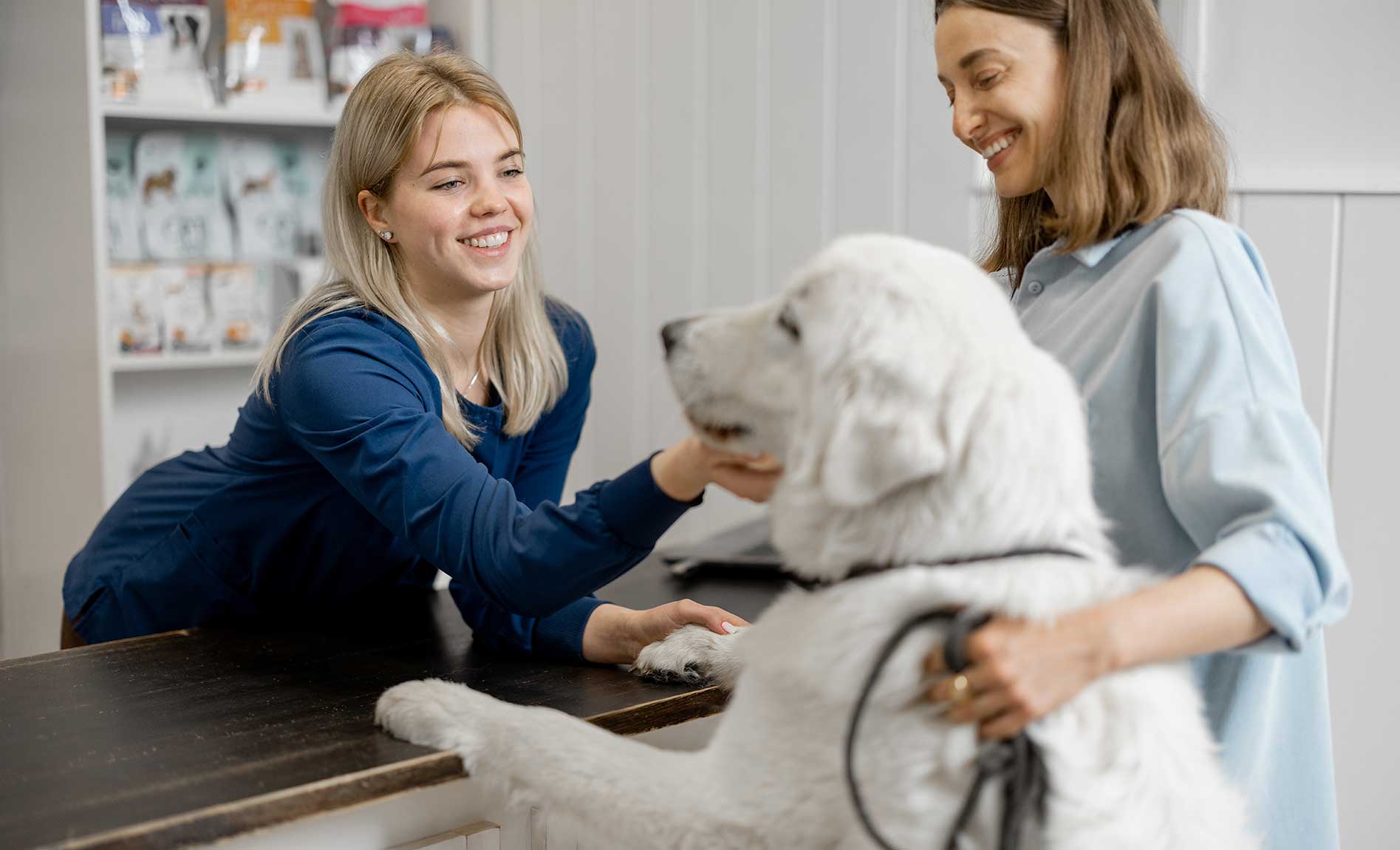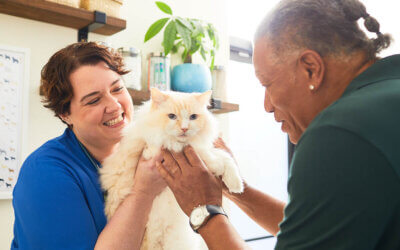All clients are not created equal. Some are kind and empathetic. They understand medical limitations. They have realistic expectations. They bring their cats and dogs to you regularly for pet wellness care. They trust your recommendations, and they don’t complain about paying for their pet’s care.
They’re great, and you should take great care of them and nurture the bond you have with them every chance you get. Here are some tips to help you strengthen client bonds and boost satisfaction and loyalty.
1. Create a loyalty rewards program
Many businesses have loyalty programs — you probably participate in a few yourself. Your veterinary practice should be no different if you’re trying to reward your clients for following your suggestions and properly taking care of their pets. VIP members typically receive special perks, and your veterinary loyalty program can serve as an elite club for your clients.
Not only will a well-designed loyalty program reward your clients for doing business with you, but you can also use the earning and redeeming structure to drive desired client behavior. For example, your clients can earn reward points for purchasing dental health products, which can then be redeemed for a percentage off a pet dental cleaning. Or, purchasing a year’s supply of parasite prevention can earn $10 off an annual 4DX test.
2. Share pet photos on social media
Who doesn’t love seeing pictures of adorable puppies and kittens? Your clients will be particularly delighted to see their pet taking center stage on your social media page. Before snapping photos of pets visiting your veterinary practice, ensure the client has signed a photo release form to allow you to post it.
You can also encourage clients to post their own pet photos to boost engagement on your page. For example, run a contest around Halloween to win a bag of dental treats. Allow clients to post pictures of their pets modeling their costumes, and the pet with the most likes wins the treat.
3. Let pets choose a “prize” for completing their appointment
When you visited your pediatrician or dentist as a child, they may have had a toy box with small “prizes” inside for when you completed your exam or cleaning. Apply this concept to your exam rooms. Stock your species-specific prize box with a variety of appropriate toys, chews, and treats. When the appointment is over, allow the pet to pick out their prize.
4. Send “get well soon” gifts to pets
Nothing makes clients feel more special than when you check on their pet after an illness or procedure. Kick your illness and surgical follow-ups up a notch by sending a chew toy or catnip mouse to your patients, in addition to performing your standard progress report phone calls.
5. Allow clients to be with their pet
Many pet owners view their pets as furry family members, and, when they take their pets to the veterinarian, they want to be allowed to be with their “kids” for the entire visit. Show your clients you understand their viewpoint by allowing them to be present for blood draws and nail trims. Another great way to help ease pet owner concern is by allowing them to sit with their pet as they become relaxed with sedation prior to a laboratory or surgical procedure. This will help alleviate many of their fears about sedation and anesthesia, and also promote calmness in the pet (usually).
6. Invite clients to “the back”
Invite clients into “the back” when they drop off or pick up their pet. This imparts a VIP feeling of getting to go behind closed doors and see an exclusive behind-the-scenes look at the inner workings of a veterinary practice. And, while their pet is in your hospital, send regular veterinary notifications to update your clients and keep them in the loop.
7. Give your clients multiple ways to contact you
Instead of giving out your personal cell phone number, allow your clients to contact you in other ways. Have your digital coordinator monitor your practice email, chat or text messages, and social media messages, while your CSRs handle the phone lines. Besides the care their pet receives, nothing is more important to your clients than communication.
8. Check on your patients personally
After a hospitalized or surgical patient returns home, your clients want you to check in on them. Use technology to make this efficient and convenient for you and your clients. If your client communication platform has a 2-Way chat feature, use that to reach out after a day or two, which will allow pet owners to monitor their pet for issues and think of questions they may have forgotten during discharge.
9. Honor your patients’ memories
Forming close bonds with your patients is one of the biggest perks of working in veterinary medicine, and it can be just as hard on you when a pet passes as it is on their family. Demonstrate the depths of your emotions when a pet dies by having a tree or flower planted in their name, or have their name engraved on a garden rock.
10. Take note of the little things
Remember the little things about your patients by being a good note keeper. For example, when I worked in practice, I knew that Sheba (my 13-year-old diabetic cat patient) loved to be combed on the cheeks and eat Royal Canin treats during her exam, so these items were waiting in the room prior to her arrival.
Exceeding your clients’ expectations doesn’t have to be hard. An all-in-one client connection platform can help. Schedule a Vetsource demo to learn how.



